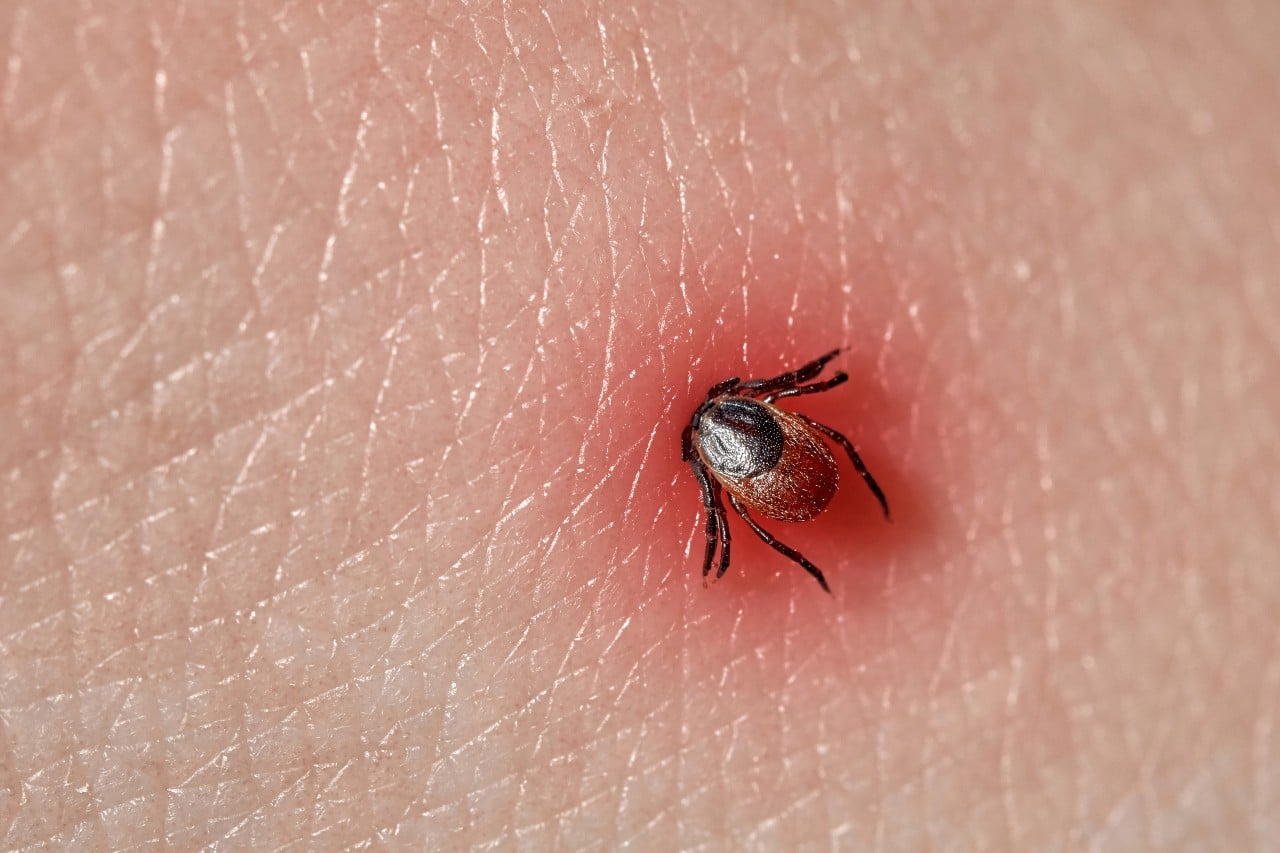Warm weather has finally arrived in Northeastern, Pennsylvania, and for many, that means heading outdoors to enjoy the beautiful temperatures and lush, green scenery. While the spring and summer months bring plenty of flowers, fresh growth, and longer days, it also signals the return of something far more dangerous.
That’s right; tick season is here, and out of all the states in the U.S., Pennsylvania has the worst tick population. But when exactly does tick season begin in Pennsylvania, and what should you be doing to protect yourself?
What is a tick?
Believe it or not, ticks are a part of the arachnid family. These tiny, eight-legged parasites are hard to spot as they range from 3/16-inch to about ½ inch depending on the species. They range in colors are usually brown, reddish-brown, or black, and their main objective is to find and feed off a host. These little bloodsuckers start off small, but once they fill up and become engorged, they can grow as big as a grape.
There are several tick species that can be found in Pennsylvania, including deer ticks, brown dog ticks, and American dog ticks. They can’t fly or jump, but they can reach out and grab a host with their first pair of legs.
Ticks can be found pretty much anywhere, though they tend to live in wooded areas or stick to spaces with heavy growth, shrubs, trees, or high grass.
Why are they a problem?
While tick bites can be harmless, the diseases they pass to their human and animal hosts can be deadly. Bites can cause serious allergic reactions in those prone, and many ticks carry tick-borne illnesses that can be devastating.
Some of the most common diseases are Lyme disease, Rocky Mountain spotted fever and Ehrlichiosis. Deer ticks are known to carry Lyme, and often the symptoms can be like that of Covid-19. These symptoms are often neck stiffness, weakness, headache, nausea, fever, chill, muscle and joint pain, and swollen lymph nodes. It’s likely you will see a bulls-eye rash near the bite site.
If left untreated, these diseases can be deadly and often cause life-long complications.
Suns out, Skins out
When the weather gets warmer, the ticks emerge, and Pennsylvania is known for its outrageous tick population. Tick season usually begins in April and can last as long as late October. The population typically begins to die down after the cold winter, but not all ticks die as the world freezes. Also, with milder winters, the population doesn’t drop as significantly, causing the population to boom as the warmer weather returns.
More rain and humidity usually indicate a greater tick population, and the “season” stretches from spring and into the late fall.
How to keep ticks off: 4 Steps
Though the ticks are out and about, that doesn’t mean you’re locked indoors. There are plenty of things you can do to avoid any tick entanglements.
If you are planning to head outdoors this “tick season,” here are a few things you can do:
- Cover your body. Wear long pants, long-sleeve shirts, and closed-toe shoes, especially if you are venturing into the wooded areas. Keep these clothes light to spot ticks easier.
- Be sure you apply insect repellent with at least 20% DEET. This will not only protect against ticks but gnats and mosquitoes as well.
- If you are hiking or on a trail, try to stick to the middle of the trail. Ticks climb to the edge of grasses, trees, and other growth and will grab on to any host that comes close enough. If you do brush against or go through heavy growth, do a quick check to make sure you didn’t pick up any hitchhikers.
- Once home, check yourself and your loved ones, including pets, for ticks. Wash clothes and take a shower as well for extra peace of mind.
If you carefully follow these rules and stay mindful of heavily populated tick areas, you can avoid and pest entanglements.
I’ve been bitten, what do I do?
Even the most careful people can end up with an unexpected passenger. If this happens to you, don’t panic. However, you’ll need to act quickly. Here’s what to do.
- Get a clear view of the tick. Remove any clothing and push away any hair that may be blocking it.
- Using a tick removal tool or fine-tipped tweezers, grab the tick by the head. Do not grab the tick by the body. This could cause the tick to inject blood into your skin and pass on any disease it may be carrying.
- Pull the tick straight back until the head is removed. Be careful not to twist the tick.
- After removal, place the tick in a bag or dispose of it via flushing. You may want to keep the tick to test for possible illnesses.
- Wash your hands and the bite site well with warm water and soap.
- Monitor the bite site for rashes and watch for any signs of a reaction.
Be sure to keep an eye on the bit to watch for any swelling or rashes. If you do experience symptoms or suffer any reactions, call a healthcare professional immediately.
As the weather heats up, it’s the perfect time to explore the great outdoors. However, as you step outside, don’t forget to keep an eye out, or you could end up the host for some very tiny guests. Don’t worry; you can keep ticks off and away if you take the necessary precautions. Enjoy summer and be tick-free.
[wpforms id=”1017″ title=”true” description=”true”]


